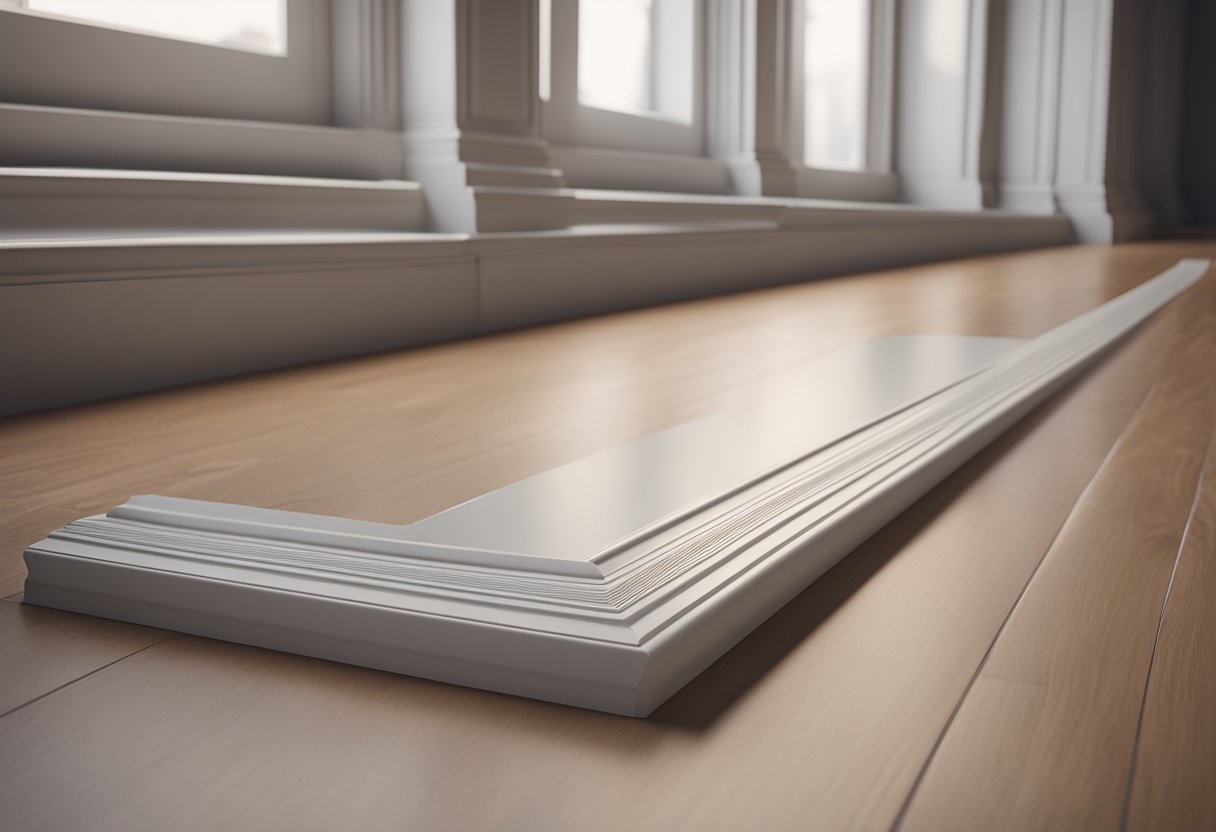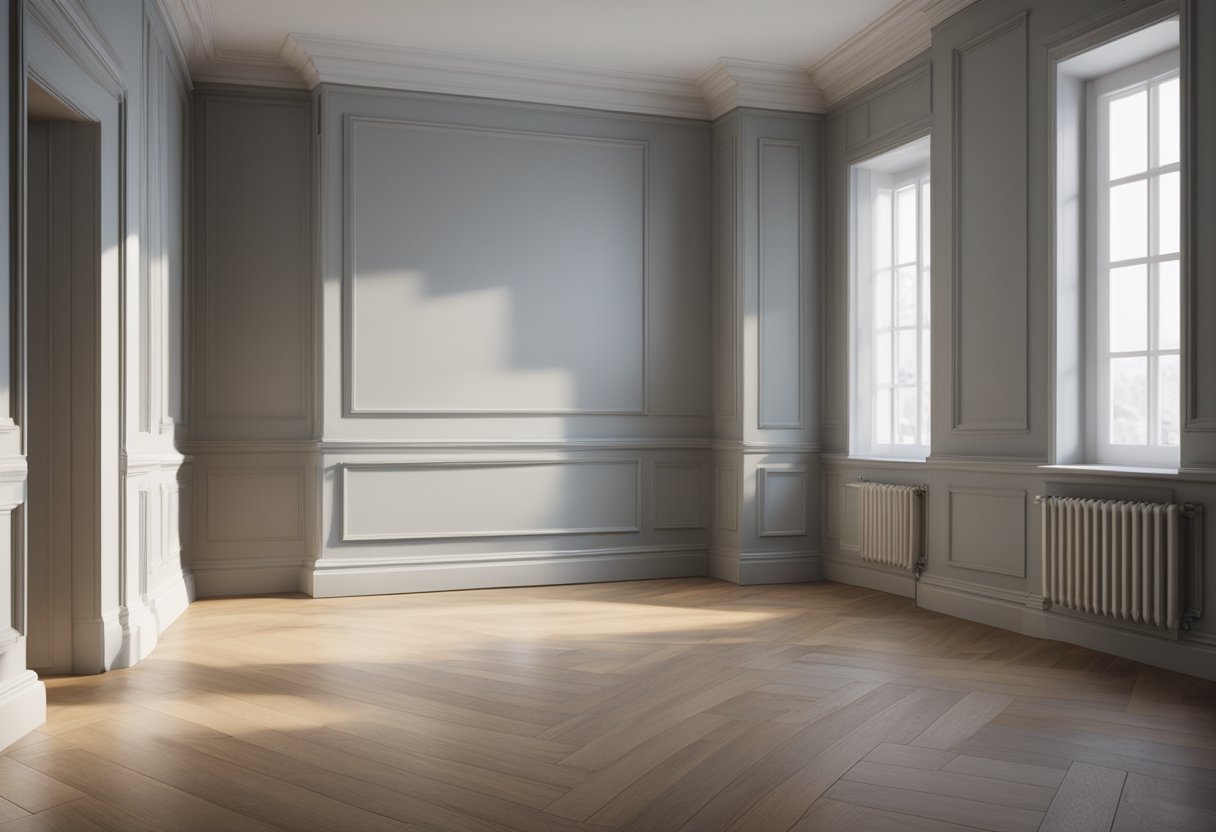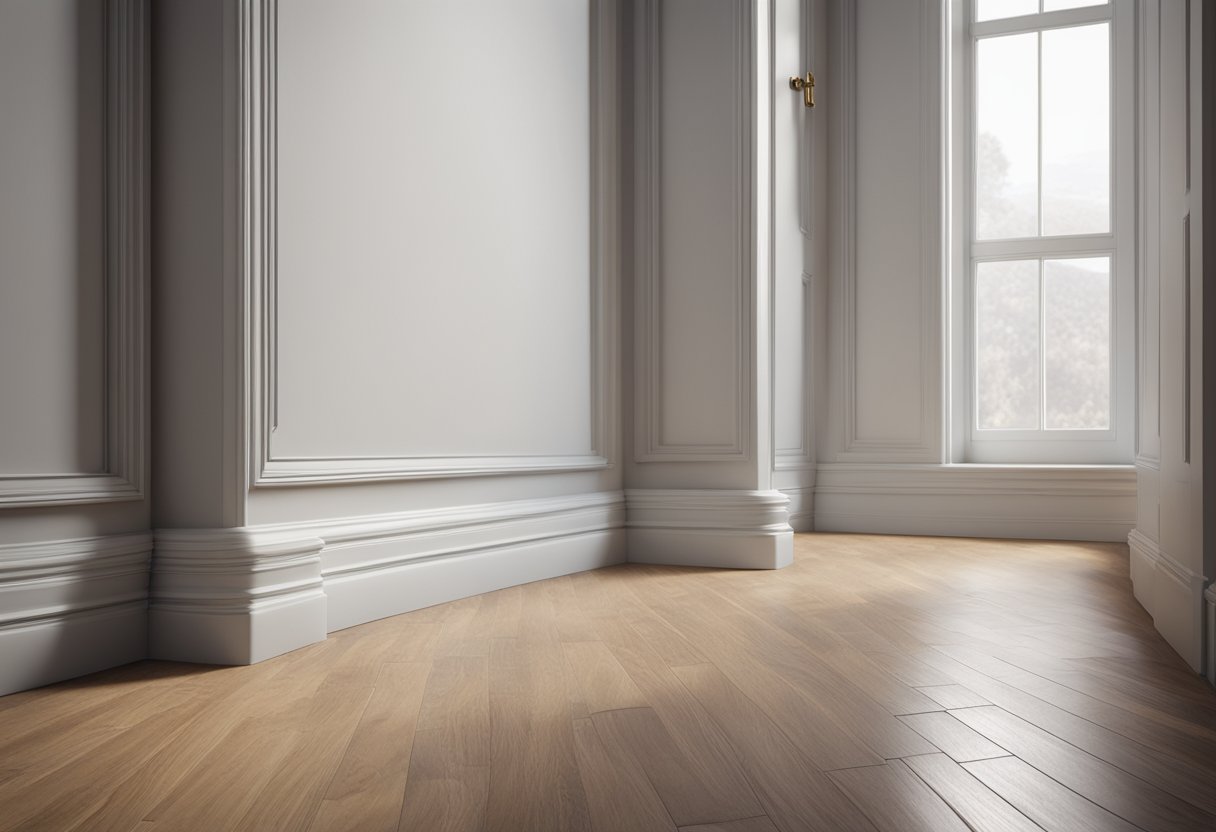Skirting Board vs Skirting Board Cover - Which is Better? Pros and Cons Explained
Skirting boards are an essential part of any room, providing a neat finish between the floor and walls. However, when choosing between traditional skirting boards and skirting board covers, it can be difficult to know which is the best option for your home. Many of us don't want do deal with the laborious task of removing pre-existing skirting board, and may opt for skirting board covers. Let's take a look into both options, and weigh out the pros and the cons so you can make the right decision for your home.
What's the difference between skirting board and skirting board covers?
Traditional skirting boards are made from wood or MDF and are fixed to the wall with nails or screws. They come in a range of styles and sizes, from simple profiles to ornate designs. On the other hand, skirting board covers are made from PVC or MDF and are designed to fit over existing skirting boards, providing a quick and easy way to update the look of your room without the need for any major construction work.
There are pros and cons to both options. Traditional skirting boards can be more expensive to install, but they are durable and can last for many years. Skirting board covers, on the other hand, are cheaper and easier to install, but may not be as durable as traditional skirting boards. Ultimately, the choice between skirting boards and skirting board covers will depend on your personal preferences and budget.
Understanding Skirting Boards

There is a wide range of different types and material properties available when manufacturing skirting boards. Knowing the differences between them all will help you make an informed decision and ensure that you choose a skirting board that is both functional and aesthetically pleasing.
Types of Skirting Board
There are several types of skirting boards available, each with its own unique features and benefits. Some of the most common types include:
-
MDF Skirting Board: These skirting boards are made from medium-density fibreboard and are a popular choice due to their affordability and versatility. They can be painted or stained to match any decor style and are available in a range of sizes and profiles.
-
Softwood Skirting Boards: Softwood skirting boards are made from pine or other softwoods and are a great choice for those who prefer a natural wood look. They are also available in a range of sizes and profiles and can be painted or stained to match any decor style.
-
Hardwood Skirting Board: Hardwood skirting boards are made from oak or other hardwoods and are a more premium option. They are durable and long-lasting and can add a touch of elegance to any room.
Material Properties
The material properties of skirting boards are important to consider when choosing the right type for your home. Some of the most common materials include:
-
PVC: PVC skirting boards are a popular choice due to their durability and low maintenance. They are also resistant to moisture and can be easily cleaned.
-
Natural Wood: Natural wood skirting boards are a great choice for those who prefer a natural look. They are available in a range of wood types and can be painted or stained to match any decor style.
-
Metal: Metal skirting boards are a unique option that can add an industrial or modern touch to any room. They are durable and long-lasting and can be painted or left in their natural state.
Overall, understanding the different types and material properties of skirting boards can help you make an informed decision and choose the right skirting boards for your home.
Exploring Skirting Board Covers

If you are looking for a way to revamp your existing skirting boards without going through the hassle of a complete renovation, skirting board covers may be the solution you need. In this section, we will explore the pros and cons of skirting board covers and how they can enhance the aesthetic appeal and versatility of your home.
Aesthetic Appeal and Versatility
Skirting board covers come in a variety of styles and finishes, allowing you to choose one that complements your home's decor. Whether you prefer a classic or modern look, skirting board covers can add an elegant touch to any room. They are also available in a range of colours, so you can match them to your walls or create a contrasting effect.
Moreover, skirting board covers are versatile and can be used in any room of your home. They can be fitted around corners, door frames, and other obstacles, giving your skirting boards a seamless look. They are also available in different heights and widths, so you can choose one that best suits your needs.
Installation and Renovation
One of the main advantages of skirting board covers is that they are easy to install. You don't need any special tools or skills to fit them, and they can be installed over your existing skirting boards. This means that you don't have to remove your old skirting boards, saving you time and money.
Skirting board covers are also ideal for renovation projects. If your old skirting boards are damaged or outdated, skirting board covers can give them a new lease of life. They can cover up any imperfections and provide a fresh, modern look to your home.
In conclusion, skirting board covers are a cost-effective and stylish way to enhance the aesthetic appeal and versatility of your home. They are easy to install, versatile, and can be used in any room of your home. If you are looking for a quick and easy way to revamp your skirting boards, skirting board covers are definitely worth considering.
Pros and Cons of Skirting Boards

Skirting boards are a popular choice for many homeowners. They are a great way to finish off a room and can add a touch of style and elegance to any space. However, there are also some downsides to skirting boards that you should consider before making your final decision.
Durability and Maintenance
One of the main advantages of skirting boards is their durability. They are designed to withstand wear and tear and can last for many years without needing to be replaced. They are also relatively easy to maintain. You can simply wipe them down with a damp cloth to keep them looking clean and fresh.
On the other hand, skirting boards can be prone to damage if they are not installed properly. They can also be difficult to clean if they are painted or varnished. If you want to keep your skirting boards looking their best, you will need to repaint or varnish them periodically.
Cost Considerations
When it comes to cost, skirting boards can be a relatively inexpensive option. They are available in a range of materials and styles, so you can choose one that fits your budget. However, the cost of skirting boards can vary depending on the material and finish that you choose.
Another factor to consider is the cost of installation. Skirting boards can be difficult to install, especially if you are not experienced with DIY projects. You may need to hire a professional to install them for you, which can add to the overall cost.
In conclusion, skirting boards have both pros and cons. They are durable and relatively easy to maintain, but they can be prone to damage and difficult to clean. They are also a relatively inexpensive option, but the cost can vary depending on the material and finish that you choose. When making your final decision, it's important to consider all of these factors to ensure that you choose the best option for your home.
Pros and Cons of Skirting Board Covers

Now you might be in two minds about whether to replace your skirting boards or use skirting board covers. Here are some pros and cons of using skirting board covers:
Ease of Use and Protection
One of the main benefits of skirting board covers is that they are easy to install. You don't need to remove your existing skirting boards, which can be a time-consuming and messy job. Skirting board covers can simply be glued onto your existing skirting boards, saving you time and effort.
Another advantage of skirting board covers is that they can protect your skirting boards from wear and tear. Skirting boards can become damaged over time, especially if you have children or pets. Skirting board covers can protect your skirting boards from scratches, dents, and scuff marks.
Budget and Style Flexibility
Skirting board covers are a more cost-effective option than replacing skirting boards. Replacing skirting boards can be expensive, especially if you have a large room or multiple rooms to renovate. Skirting board covers can give your room a fresh new look without breaking the bank.
Skirting board covers also offer more flexibility in terms of style and colour. You can choose from a range of colours and styles to suit your interior design. MDF skirting board covers are a popular option, as they are durable and easy to paint.
However, it's important to note that skirting board covers may not be suitable for all types of skirting boards. If your skirting boards are uneven or damaged, skirting board covers may not provide a smooth finish. In addition, skirting board covers may not be suitable for all styles of interior design, as they can look bulky and out of place in some settings.
In conclusion, skirting board covers offer a cost-effective and easy-to-use option for renovating your interior. However, it's important to consider the pros and cons before deciding whether to use skirting board covers or replace your skirting boards.
Making the Right Choice

Assessing Your Needs
- Budget: If you're on a tight budget, skirting board covers are a more affordable option than replacing your skirting boards entirely.
- Moisture: If you live in a damp environment, you might want to consider skirting board covers made of materials that are resistant to moisture.
- Colours: Skirting board covers come in a range of colours and finishes, so you can choose one that complements your room's decor or matches your architrave.
- Sizes: Skirting board covers come in various sizes, so you need to measure your skirting boards carefully to ensure a perfect fit.
- Length and height: If you have high ceilings, you might want to choose taller skirting boards or covers to create a sense of proportion in your room.
- Contrast: If you want your skirting boards to stand out, you might want to choose a contrasting colour or finish for your skirting board covers.
Final Recommendations
Ultimately, the choice between skirting boards and skirting board covers comes down to your personal preferences and needs. If you're looking for a budget-friendly option that's easy to install, skirting board covers might be the way to go. However, if you want a more traditional look or have specific requirements for moisture resistance or size, you might want to stick with traditional skirting boards.
When choosing between skirting boards and skirting board covers, it's also essential to consider how they will look with your furniture and architrave. Take your time to choose the right option for your room, and you'll be rewarded with a finished look that's both functional and beautiful.

